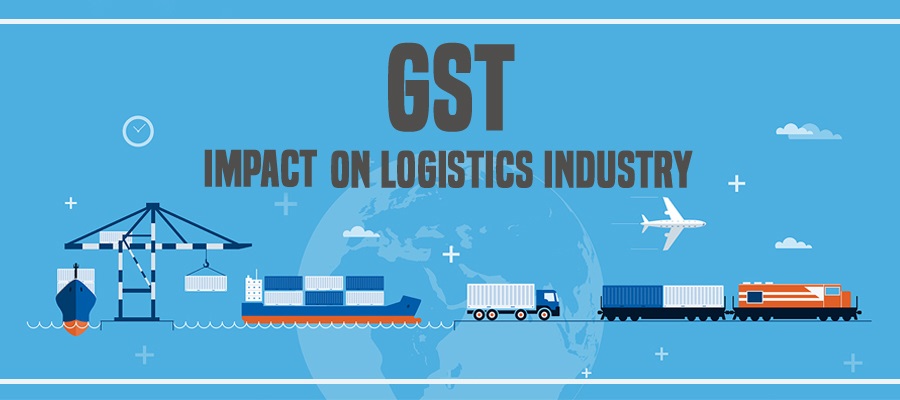
GST is presumed to be the next big-bang financial reform in the Indian context. It will be a boon to various industries. It is a good time for the players to restructuring their ideas with an opportunity to increase profitability which were previously unavailable. They can proactively invest to make their supply chain leaner and efficient. They must also ensure that cost competitive structures are put in place. One way can be parting away from traditional Carrier-and-Freight model and setting up strategically located warehouses. Also, it can be partnering with a 3PL or 4PL to ensure optimal utilization of resources.
GST IMPACT ON SUPPLY CHAIN MANAGEMENT
The structure of the supply chain in influenced by differential taxes based on geographical location.
By eliminating multiple state taxes, the major logistics companies are encouraged consolidate their warehouses instead of maintaining one in each state to avoid central tax.
This in effect brings the overall cost of the product down as the inventory cost and inventory carrying cost down. This directly affects the final cost of the product bring the selling price down. The cost saved by the Companies as a result of GST can be used to invest further to improve serviceability. After GST implementation, the design of the supply chain will be based on customer service and logistics cost.
It also offers flexibility into demand and supply matching. GST would also enable firms to increase the accuracy of the forecast. Smaller or shared warehouses can also be merged into one bigger warehouse and space optimization will be achieved.
The following are the benefits enjoyed by companies after the implementation of GST:
- Interstate sourcing of raw materials
- Price negotiation
- Improvement in quality
- Better forecasting
- Improved inventory management
- Better trade-off between cost and customer service
- Capacity expansion
- Greater flexibility in manufacturing
GST IMPACT ON WAREHOUSING
The location of warehouse is generally chosen to minimize the cost of delivery for both the company and the customer. Other factors considered are access arterial highways, access to highways, ports, etc. for shipment and labour availability. The local state taxes are also a factor considered by companies before locating a warehouse. Some companies prefer to have ware houses in every state of the country to avoid local taxation while transporting from one location to another.
With the implementation of GST, logistics companies can have restructure their warehouse locations and can have one central warehouse or can go for warehouses at specific locations or can adopt a hub and spoke model.
With GST the local state taxes are eliminated and there will be only one Goods and Services Tax across the entire country. This enables the companies to achieve cost efficiency in their operations and thereby transferring this cost benefit to the end consumer in the supply chain.
Advantages on warehousing with respect to GST is that companies can consolidate stock at their warehouses. Demand variation at a particular warehouse can also be reduced. This in turn improves demand planning and improved inventory management.
Disadvantages of GST with respect to warehousing is that companies face challenges during route planning while having to deal with deliveries across a bigger geography. In case of services or deliveries which requires lower lead times, the service level might be impacted.
IMPACT ON TRANSPORTATION
Currently, the transportation is based on the Central Sales Tax and varied state value added taxes. However, after the introduction of GST, the tax will be levied at the central level and the state value added taxes does not have any impact. The tax rates are uniform across the borders and state boundaries will no longer be the parameter in deciding the routes. With lesser number of warehouses, the location of warehouses and their transportation networks would eventually turn out to be critical. This demands for the fulfilment of prerequisites such as road/rail/multimodal
Connectivity. This requires well in advance planning to build an agile, efficient and futuristic supply chain model.
With larger warehouses (in terms of capacity), the transportation lot sizes automatically increase, which results in the larger and more efficient trucks. The optimization and rationalization of these options provide the competitive advantage to the business.
ADVANTAGE FOR 3PL PROVIDERS
According to the recent report launched by FICCI, 3PL logistics market in India is expected to be worth of $301.89 Billion by 2020. By 2020, Indian logistics market is expected to grow at a CAGR of 12.17%. This is because of the boom from ecommerce companies and expansionary policies of FMCG majors. With the effect of GST, instead of maintaining smaller warehouses in each and every state, the companies will be setting up lesser and bigger warehouses, and can follow hub and scope model for freight movement from warehouses to manufacturing plants, distributors and retailers. Hence, there is a bigger opportunity that awaits the 3PL service providers who can manage these bigger routes and deliver accurately and efficiently. The Indian logistics industry constitutes Around 14% of the GDP which is greater than the other developing nations. The 3PL logistics firms are evolving from traditional service delivery systems to highly integrated and technically equipped service providers striving to meet the service demands. GST provides them the ample opportunity to invest and expand the 3PL base in India.
NWCC the leading Warehousing and Distribution Company has strengthen its infrastructure by having warehousing facilities in all major metros in India and will be adding 100 vehicles every year to maintain its lead of largest road distribution company in India be able to gain maximum benefits of GST Implementation to be able to pass it on to its clients.
Request a consultation by writing to us at https://goo.gl/9aRSQi or call us at 18001234855 (Toll Free)









